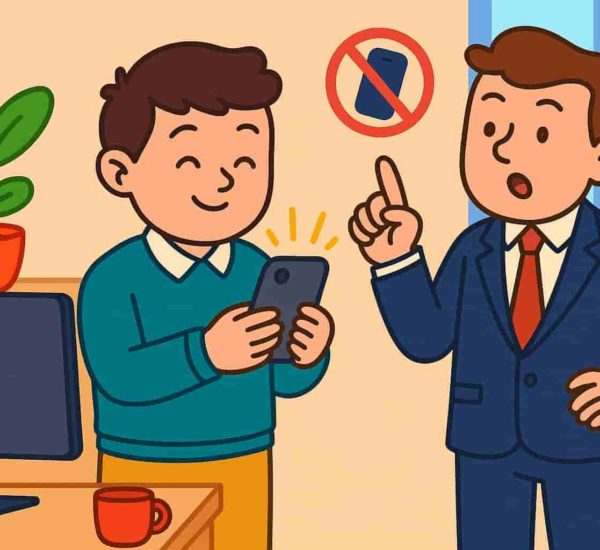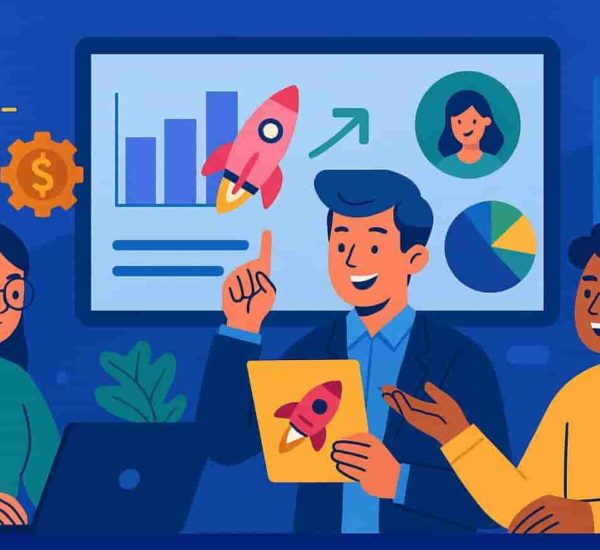In the intricate dance of human interaction, our decisions are often swayed by unseen forces. Cognitive biases—subtle quirks in our thinking—can distort our perceptions and lead us astray in the workplace. From hindsight bias that convinces us we predicted outcomes all along to confirmation bias that clouds our judgment, these mental shortcuts shape our decisions in profound ways. In this article, we’ll delve into eleven common biases, unraveling their effects on workplace dynamics, and explore practical strategies for overcoming them. Understanding these biases is the first step toward fostering a more inclusive, rational, and effective work environment.
What is a Cognitive Bias?
The human mind is a strange place. Our brain has a way of tricking us into believing things that may not accurately reflect reality.
A cognitive bias is a way our mind tricks us into believing something based on our preconceptions, past experiences and other social factors. We’d all like to believe that every step we take is taken with complete objectivity but that isn’t always true.
To rephrase, a cognitive bias is the water that distorts our reality into something close to the truth, but not quite it.
10 Types of Bias in Action
Types of Bias #1: Hindsight Bias
Also known as the “knew-it-all-along” phenomenon, Hindsight Bias is characterized by our tendency to convince ourselves that we predicted an event before it actually happened. However, this is seldom the case. This leads people to think that they can predict events accurately. We rearrange our thoughts and judgements after an incident and pretend that we knew how everything was going to turn out all along.
In a study by the BBC, founders of several companies were asked if they think their startup will succeed. Nearly 78% of them believed that their startup would do well. They were asked the same question after their startups failed. Only 58% said that they thought their startup would succeed. This study is a classic example of hindsight bias. We can see that many entrepreneurs revised their estimation later and pretended they knew all along.
Types of Bias #2: Confirmation Bias
Confirmation bias is one of the most significant types of bias in the workplace. It is characterized by our tendency to recall and search for information that confirms or supports our beliefs and values.
For example, managers might feel more inclined towards a particular idea. In a meeting, they will agree with the people who share their interpretation and ignore the rest. This can have serious implications as confirmation bias types restrict managers from making rational decisions.
Types of Bias #3: Availability Heuristic
Decision-making is affected by our tendency to stick to the information and ideas we already have. We use the information we can recall easily to make decisions. We make decisions based on this easily available data even if it is incomplete.
Many times, HR personnel need to make quick decisions. While doing that, they may be influenced by the information their brain can recall at that time. For example, if HR has to resolve a conflict in the workplace, they might take sides unconsciously based on recent events when they should be treating each situation independently.
Out of all processes in an organization, HR is the most susceptible to the availability heuristic. Human beings try to use their own experiences in place of data available because it resonates with them. By supporting data-driven HR decisions, this type of bias can be kicked to the curb.
Types of Bias #4: Anchoring Bias
Anchoring bias is a heuristic in which people make decisions with limited information. The first line of information we receive ‘anchors’ us to a specific decision. We give disproportionate weight to our first impressions and thoughts. This type of bias then affects all our subsequent decisions. The anchors can be as simple as an idea by a coworker. It can also be discriminatory when we stereotype a person based on their race, accent, or background.
The anchoring bias is a dangerous interpretation of the first impression being the last impression.
Types of Bias #5: Affinity Bias
Affinity bias is prevalent in many organizations. In this type of bias, people favour those similar to themselves. We look for connections with people based on trust. This cognitive partiality had an evolutionary advantage as human beings could only trust people similar to themselves, and an outsider was viewed with suspicion.
However, things have changed now. The world is more connected now than ever. Organizations follow diversity hiring, and hence people from different races, gender, and economic status work together to achieve common goals.
For example, a manager from an Ivy-League college is looking at new hires in their team. If their first thought is that the Harvard graduate is bound to be more competent than the others they’re suffering from an anchoring bias. They might feel a connection with this hire and give extra opportunities to them. Organizations should actively try to fight such types of bias as they can affect inclusivity and diversity in the workplace.

Types of Bias #6: Halo Effect
The halo effect is a type of cognitive bias where we assess and judge other people by how we feel about them. Our impression of them is affected by specific traits. The halo effect is often the result of human beings favouring people who are conventionally attractive. Interestingly, one study found that people who are more than six feet tall earn nearly $166,000 over a thirty-year career than someone who is only five feet five inches tall.
The halo effect can also be seen in situations where a company is performing well beyond its expectations. For example, Cisco in the 1990s was performing spectacularly. Everyone, including the management, thought that it was because of their brilliant tactics and superb management. It didn’t take long for the tables to turn. When the dot com bubble burst, Cisco’s performance dipped. Everyone changed their stance and said that the company was failing because of poor management and bad decision-making. Company performance creates a halo – good or bad – and shapes how we perceive its strategy, culture, and leaders.
Types of Bias #7: Attribution Bias
Sometimes referred to as Fundamental Attribution Error, this is a type of bias where we often overattribute the influence a person had over a situation. At the same time, we ‘under attribute the influence other factors might have had.
We ignore external factors that could have impacted how things turned out. For example, suppose there are three salesmen: Aiden and Brendan. Suppose Aiden is lucky enough to be selling the right goods in a wealthy area when the economy is booming. Aiden will be lauded for their salesmanship even though external factors were a significant contributing factor to their success. Suppose that Brendan has the misfortune of selling the wrong goods at a time when the market is in recession. Brendan will be judged harshly by their manager. Even though the external factors worked to their detriment.
Types of Bias #8: Bandwagon Effect
Sometimes people do things because everyone else is doing it. Many people are conformists and adopt the ideas, perceptions, and principles of the people around them. Furthermore, they tend to get on board with things because everyone else agrees.
The bandwagon effect also affects the organization as it hinders rational decision-making. For example, suppose managers have to make a crucial decision. Most of the managers favor one decision. Some have valid reservations about it but they might not speak up because of groupthink. The bandwagon effect creates a negative feedback loop where more people hop on the bandwagon because they get influenced by others’ decisions easily. New and innovative ideas get repressed. Any valid criticism of the idea or a plan is tamped down.
Types of Bias #9: Decline Bias
This type of cognitive bias is where people view past events through rose-colored glasses and the present negatively. For example, you might have seen elders often say that things were better when they were young, and the world is witnessing a decline in terms of morals, principles, and actions. This can be due to the human brain retaining positive memories more than negative memories of the past. Another reason can be that we comfort ourselves in tough times by saying how the times are bad, not the situations themselves.
Moreover, interpersonal relationships are affected. Decline bias can be amplified by a generational divide between employees. The older generations might think that younger employees are no good and people were more hardworking in their era.

Types of Bias #10: Bias Blind Spot
A bias blind spot is a type of bias where people see that other people exhibit prejudice while making decisions. On the other hand, they feel their decisions are rational.
Most people like to see themselves in a positive light. Partiality and prejudice are usually considered negative features. They feel that their decisions are accurate and based on sound reasoning rather than prejudices.
In a 2015 American study with a sample of more than 600 people, nearly 85% of US citizens believed they were less biased than other Americans. Bias blind spots are problematic as they stop people from recognizing the biases they exhibit.
Bias blind spots are particularly insidious because organizations will find it tough to change employees who believe that they are not prejudiced.
Types of Bias #11: Self-Serving Bias
Many people blame external factors when something bad happens. However, they are quick to take credit for positive events. This type of cognitive bias is called the self-serving bias. It is essentially a defense mechanism that protects our self-esteem.
For example, a manager might take credit for a huge project that went well. On the flip side, they might blame other team members if things go wrong.
How to Overcome Types of Bias
Different types of biases can be detrimental to an organization. They can lead to bad decision-making and negatively affect interpersonal relationships. Cognitive biases need to be dealt with on an employee and team level.
Now that we’ve taken you through the laundry list of cognitive biases, they can be overcome by doing the following:
Recognize the Problem
The first step to solving a problem is recognizing that there is one.
Employees and managers need to recognize that they have inherent biases that can affect interpersonal relationships and decision-making. Have an open dialogue on this subject and work together to fight bias in the workplace.
Educate and Inform
You can call experts on behavioural psychology to educate the employees and managers. The expert can also hold training sessions and conduct exercises to minimize the effects of types of cognitive bias.
Moreover, this also encourages discussions in the workplace and can help improve employee engagement.
Encourage Dissent
It can be hard for people to go against the views of others. Leaders and managers will often admire and focus on opinions that mirror their own.
Organizations can avoid many different types of cognitive bias by encouraging the devil’s advocate. An employee can present an argument against the prevalent thought process. This can result in a much more balanced decision-making approach.
Framing of Questions
The way a question is phrased can skew opinions. Negatively framed questions can yield negative answers. Positively framed ones result in positive answers about an idea or a plan.
Organizations should ask neutral questions in meetings so that people can objectively answer the question.
Go Against Your Own Decisions
The decision-makers should think, “what would happen if we decide to do the complete opposite of what we are thinking?” They should then gather data and make forecasts based on this hypothesis. Moreover, think of everything that can go against your decision in the future. Prepare a worst-case scenario.
After you have done these things, reassess the decision.
Write the Decision Making Reasons
On an employee level, ask them to write down the reasons for every decision they make. Do this for all crucial decisions. Then, regularly analyze past mistakes by reviewing the reasons. This method can give employees rick insights into their decision-making skills.
The Impact of Cognitive Biases on The Hiring Process
HR can improve the hiring process significantly by overcoming unconscious bias in the workplace.
Organizations try their best to make their hiring process objective. But confirmation biases are difficult to avoid and deserving candidates can miss out.
An HR innovation that can help rid the screening process of implicit biases is blind recruitment technology.
These solutions offer several features that can help companies hire diversely. Blind recruitment software can redact information such as gender, race, ethnicity, education and others during the resume screening and interviewing process. The focus on job skills and experience can ensure an expansion in the candidate pool.
Cognitive biases are commonplace. No one in the world can say they are free from partiality and prejudice. If they do, it may be because they aren’t doing the work to recognize their implicit biases. However, overcoming biases is not entirely impossible.
Let us know how your company actively tries to overcome the different types of cognitive biases. Reach out to us @HarmonizeHQ and let’s swap war stories.



